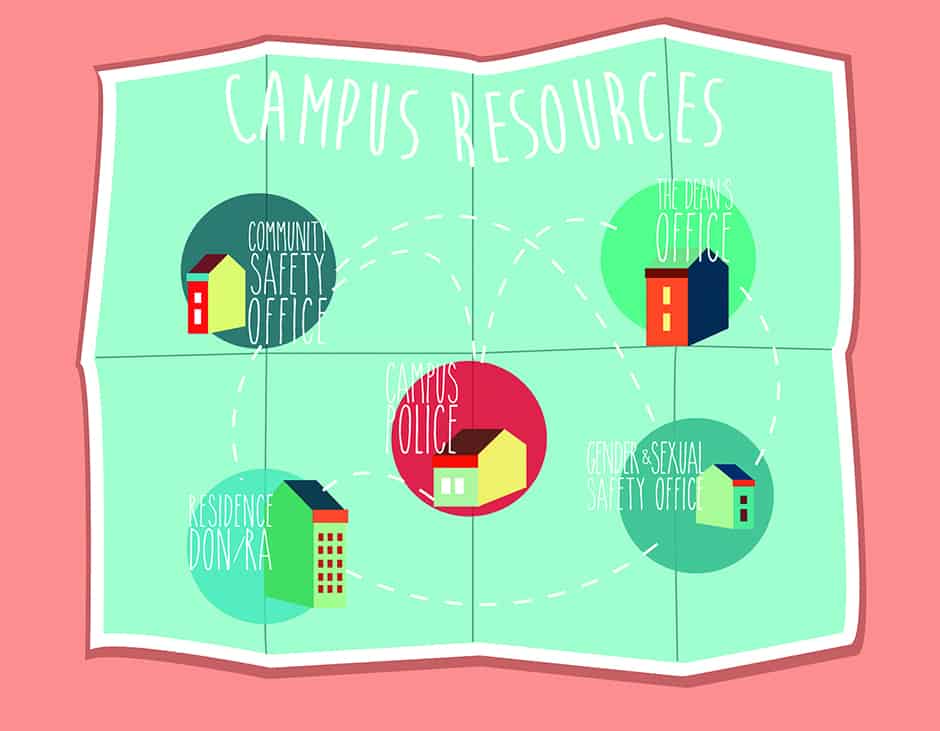For the past several months, countless instances of sexual assault on North American university campuses have been dominating the media. With these stories comes criticism for the absence of effective policies for dealing with incidents of assault and the silence that surrounds sexual violence in our society.
In last week’s issue of The Varsity, reporter Victoria Wicks conducted a sweeping investigation of sexual assault on campus, with testimonies from survivors expressing the inadequacy of available resources. In recent months, student-run grassroots initiatives such as U of T Students Against Sexual Violence and U of T Thrive have sprung up on campus in response to growing dissatisfaction with the administration’s treatment of the issue.
In many of the narratives that have arisen as a result of this discourse, certain details recur — particularly, many survivors have expressed a sense of disorientation following their assault. They did not know where to go or who to talk to; they feared their stories would not be believed; they were told, repeatedly, to go to the police.
In November, the university announced the creation of the Advisory Committee to the President and Provost on Preventing and Responding to Sexual Violence. This committee includes student representatives and is a step in the right direction — but organizing a committee, producing a document, reviewing the report, seeking further consultation, and translating it into actual policy is a lengthy process. Generating an adequate and effective policy on sexual violence on campus certainly requires ample consultation and consideration and, in order to ensure that it is done right, cannot be done rashly. With this in mind, in the short term, survivors need a more immediate solution.
At this point in the process, the establishment of the advisory committee does little more for survivors than provide a sense that recourse may eventually be available — a mere consolation during a time when they require concrete resources and support. For the university, the committee provides a convenient answer to the growing pressure to do something about this issue, in addition to acting as a publicized nod to the existence of the problem. However, for survivors attempting to find support on campus right now, the system in place remains highly decentralized, leading to redirection and, consequently, demoralization.
The reality is that sexual violence is an urgent problem on this campus and on many others across North America. With each month that passes while the university develops a response, more students are getting lost in the maze of the system. The effects of this disorientation are profound and distressing, often leading to isolation, academic struggle, and for some, depression or suicidal thoughts.
There are several small steps that the university could take as short-term solutions to this issue. In Wicks’ feature, Althea Blackburn-Evans, director of news and media relations at U of T, says that a document identifying support and services available to survivors on campus is currently being worked on.
Something as simple as a chart outlining precisely what resources are available to survivors at U of T could be produced quickly — it could include the names of offices and relevant individuals, along with descriptions of the sort of support and the degrees of confidentiality that can be expected from each of these resources. It could also include information on general options available to survivors of sexual assault, including going to the hospital if necessary, reporting the crime to the police, talking to friends and family, and city resources.
This information is mostly publicly available, but is not compiled centrally or cohesively. Frankly, it should not take months of work to put this sort of resource together. It should be prepared immediately and advertised widely as a means of both providing support to survivors of sexual assault and giving informed guidance to administrators and staff.
Another short-term solution that could be implemented is to introduce mandatory consent workshops for incoming students during frosh week. The Sexual Education Centre already offers optional presentations on consent to frosh, but not all colleges and faculties take advantage of this opportunity. This resource, which is already available, would be an ideal way to introduce principles of sexual health, safety, and prevention of sexual violence to students as soon as they arrive at the university.
At present, there are some, albeit inadequate, services available to survivors of sexual assault in the U of T community — but the task of finding the right resource to fit an individual experience is far too arduous. The unfortunate reality is that many students know someone who has been affected by sexual violence in their time as an undergraduate student at this institution.
Given the immediacy and pervasiveness of this issue, the university has a pressing responsibility to provide a coherent catalogue of options available to students who experience sexual violence. Right now, there are survivors of sexual violence on campus falling through the cracks. These students should be the university’s priority — yet, in a practical sense, the committee at present does little to help them and does far more to make the university appear as though they are providing a solution. Whatever response system the committee creates must put survivors first, rather than the reputation of the university. During this interim period of policy development, the university must take simple but immediate action toward prioritizing the students currently trying to navigate the ineffectual support that currently exists.


